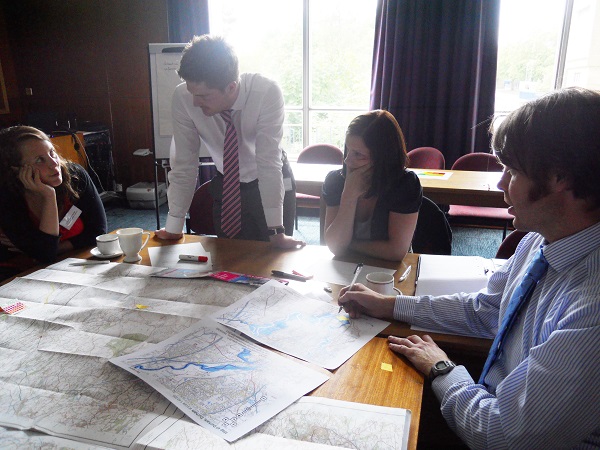2. Avoid starting from scratch: why is it important to act?
There are a number of issues to consider when using existing resources which need to be considered and overcome

Identifying hot-spot locations for particular climate hazards © Climate UK
Things to bear in mind are:
- There are a significant number of different tools and guidance documents to choose from that can make it difficult to know where to start and what tool is best for the specific job that you have in mind. This website helps by making you aware of what’s available and how tools and resources can be used - a selection of tools are available from our Resource library.
- Despite the large number of existing tools and resources, there are few which explicitly deal with how to develop socially just adaptation responses and none which provide as complete a set of evidence as is contained in the ClimateJust map tool. Many tools touch on or indirectly assist with related issues but it is not always clear how they can be used to take account of social vulnerability.
- Connections between tools and resources that are similar or that can be used in conjunction with one another are often poor. Therefore it is important to have a broad understanding of the tools and resources available which have a role to play in assisting organisations involved in local service provision.
- Many tools and resources may have been produced with a different set of users in mind. Using partnership approaches can often bring together users who have different skills and experience and allow knowledge to be shared.
- Some organisations may use different terms to mean something, and sometimes the same term is used but with a different meaning. It is only through a process of engagement and discussion that misunderstandings can be identified and a shared understanding developed.
-
Some tools operate on a workshop model basis and this can have considerable resource implications. However, the process of shared working and engagement can have important benefits too, and this can justify the use of additional resources in some instances.
- Read more about the benefits of partnership working.
- Tools might be out-of-date and not reflect current best practice so users need to verify that a tool is still appropriate at an early stage.
- Users may not appreciate the implications and limitations of some of the underlying methods which tools employ. It is good practice to use a range of tools and perspectives to inform the decision-making process.
- Good facilitation and support will be important in using tools – the degree to which positive outcomes achieved will depend on how they are used, who is involved, the quality of data fed in, etc.
References

Built by:

© 2014 - Climate Just
Contact us
